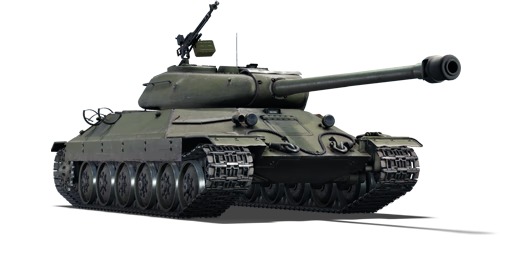The IS-6 is the fifth variant of the IS heavy tank family. It was never mass-produced and remained in the prototype stage. There was an effort to develop a replacement for the IS-2 in the closing years of World War II ('The Great Patriotic War' to the Soviets). The IS-6 (Object 252/Object 253) and IS-4 (Object 701) were created as a result of the development process. This effort was highly classified, with two competing factories creating their designs in complete secrecy for fear of exposing knowledge to one another. On paper, the IS-6 appeared to be superior to any tank in Germany's inventory at the time. However, due to mechanical faults and generally poor performance, it was beaten by its competitor during test trials, the IS-4, which entered service in 1946. Despite this, a last-ditch effort was made to improve the IS-6, with minimal success. The improved IS-6 would be known as the Object 252 November improvement, or simply the Object 252U.
Introduced in Update 1.67 "Assault", the IS-6 is one of the most feared tanks in its ranks, thanks to its strong main armament and incredible mobility packed inside a steeply sloped, thick armour that most conventional ammunition cannot penetrate. This tank may be used in every role and situation, and it will undoubtedly find a place on the battlefield. The IS-6's excellent mobility and reasonable reverse speed allow it to navigate through challenging environments that many other tanks would struggle with. Players familiar with IS heavy tanks will be happy to learn that the IS-6 has superior manoeuvrability when compared to other variants.










 2 x (150 / 210 / 235) %
2 x (150 / 210 / 235) % 
 2 x 196 %
2 x 196 % 
